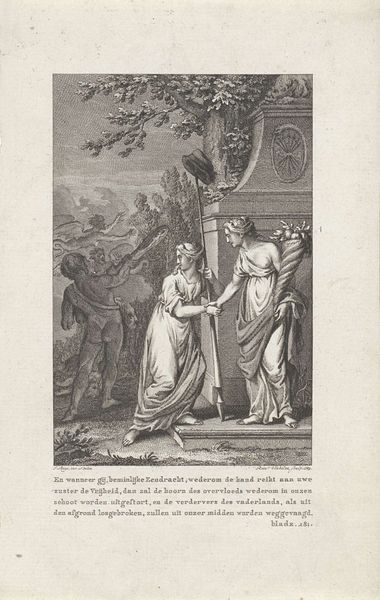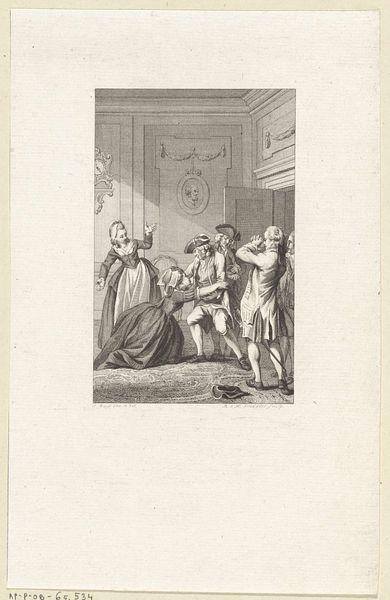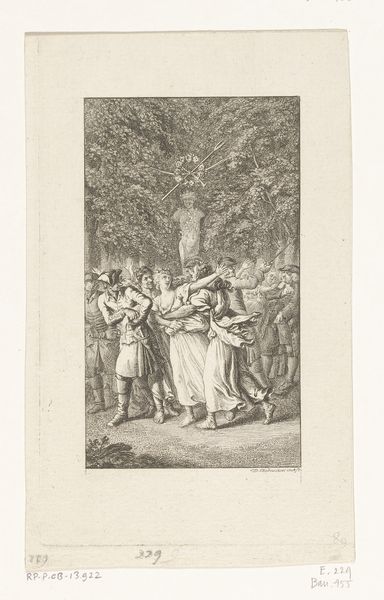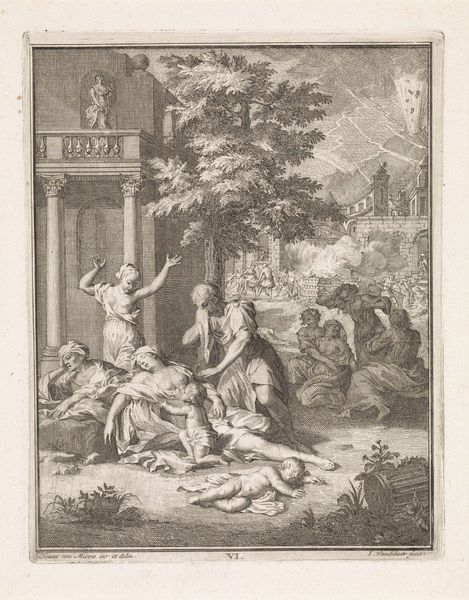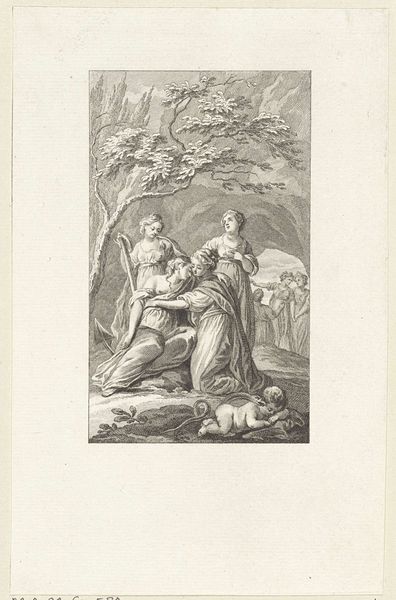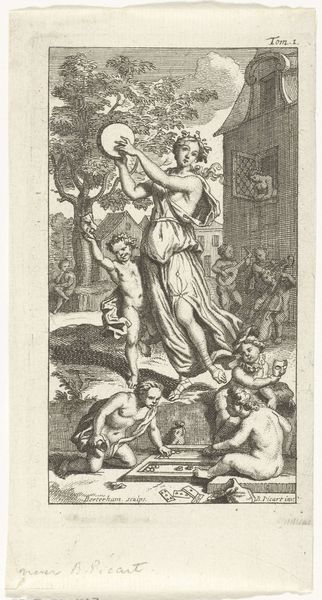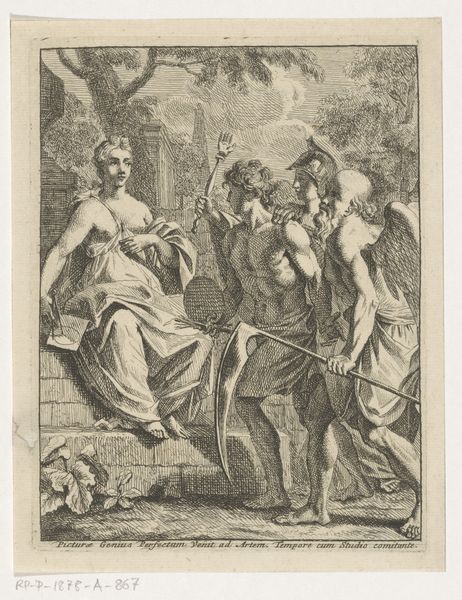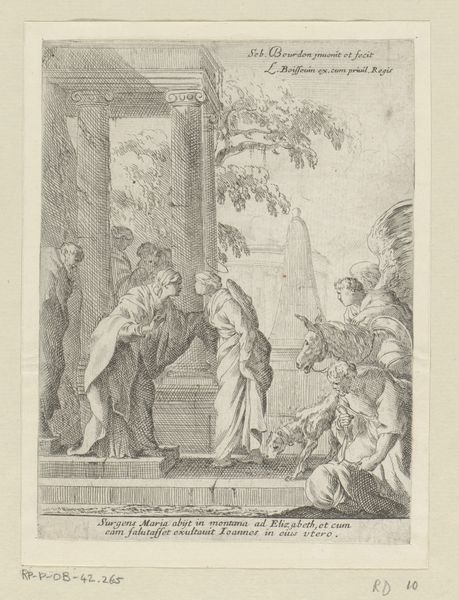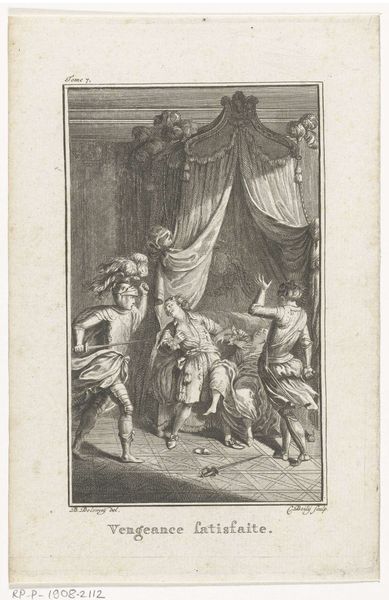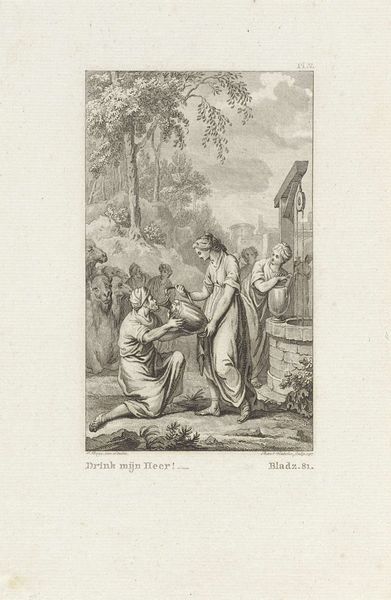
Dimensions: height 154 mm, width 103 mm
Copyright: Rijks Museum: Open Domain
Curator: Reinier Vinkeles created this engraving titled, “Titelpagina voor het vers: De vrijheid der drukpers,” in 1787. It resides here at the Rijksmuseum. What are your first thoughts? Editor: I’m struck by the dynamic tension rendered with such precision. The fine lines composing the landscape almost hum with suppressed energy. Look at the central figure; the force she exudes feels palpable, even from centuries away. Curator: The scene certainly encapsulates the political fervor of its time. We are witnessing a visual representation of the fight for freedom of the press. Note the central allegorical figure, likely representing Liberty. She is actively disarming a figure representing oppression or censorship, who, based on the implements present, might even stand in for the visual arts themselves. Editor: Yes, the very materiality of oppression being discarded by the hand of liberty! Consider the etched lines themselves – each stroke a deliberate mark against the suppression of ideas, almost mirroring the very act it depicts. The work emphasizes print as a potent medium for propagating liberation. I see not just image, but a potent social document! Curator: Absolutely, the choice of print is crucial here. Prints democratized images and ideas. This artwork then acts as a championing of this relatively new form. In this era, the fight for free press was tied into broader political discourse. Note how in the background an established figure, perhaps representing the government is attempting to hold her back. She acts a a gatekeeper to existing sources. Editor: Exactly, and the details embedded in the scenery seem equally relevant. In contrast to those symbols of traditional governance we find symbols that indicate wealth. Curator: Precisely, those markers were, even then, indicators of an increasingly unbalanced distribution of power. With them positioned in conflict, the artist asks what can balance that dynamic. Editor: So, considering the deliberate selection of the printing process, the dynamism and conflict within the visual narrative and that even the context becomes content I must conclude that Vinkeles encourages us to view art as an activist social instrument. Curator: Indeed, art isn't just a passive reflection, it’s an active participant in shaping our understanding and our social and political futures. It acts as a constant tool through which social evolution may take place.
Comments
No comments
Be the first to comment and join the conversation on the ultimate creative platform.
